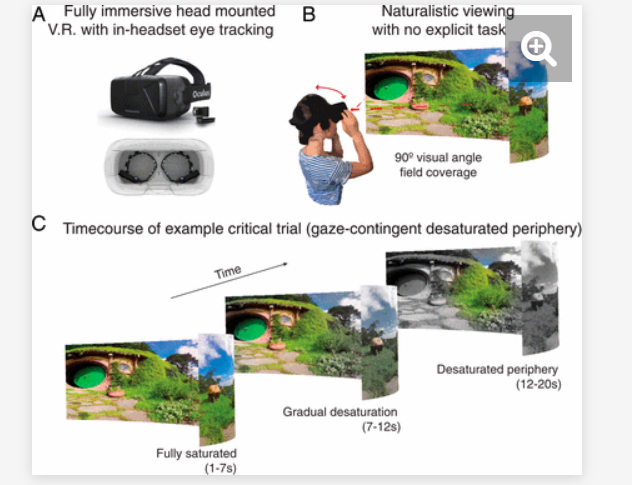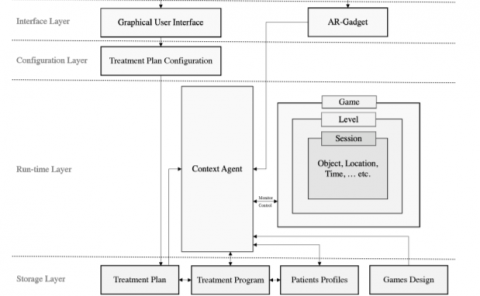The limits of color awareness during active, real-world vision
PubDate: June 8, 2020
Teams: Amherst College,Dartmouth College
Writers: Michael A. Cohen, View ORCID ProfileThomas L. Botch, and Caroline E. Robertson
PDF: The limits of color awareness during active, real-world vision
Project: The limits of color awareness during active, real-world vision

Abstract
Color ignites visual experience, imbuing the world with meaning, emotion, and richness. As soon as an observer opens their eyes, they have the immediate impression of a rich, colorful experience that encompasses their entire visual world. Here, we show that this impression is surprisingly inaccurate. We used head-mounted virtual reality (VR) to place observers in immersive, dynamic real-world environments, which they naturally explored via saccades and head turns. Meanwhile, we monitored their gaze with in-headset eye tracking and then systematically altered the visual environments such that only the parts of the scene they were looking at were presented in color and the rest of the scene (i.e., the visual periphery) was entirely desaturated. We found that observers were often completely unaware of these drastic alterations to their visual world. In the most extreme case, almost a third of observers failed to notice when less than 5% of the visual display was presented in color. This limitation on perceptual awareness could not be explained by retinal neuroanatomy or previous studies of peripheral visual processing using more traditional psychophysical approaches. In a second study, we measured color detection thresholds using a staircase procedure while a set of observers intentionally attended to the periphery. Still, we found that observers were unaware when a large portion of their field of view was desaturated. Together, these results show that during active, naturalistic viewing conditions, our intuitive sense of a rich, colorful visual world is largely incorrect.


